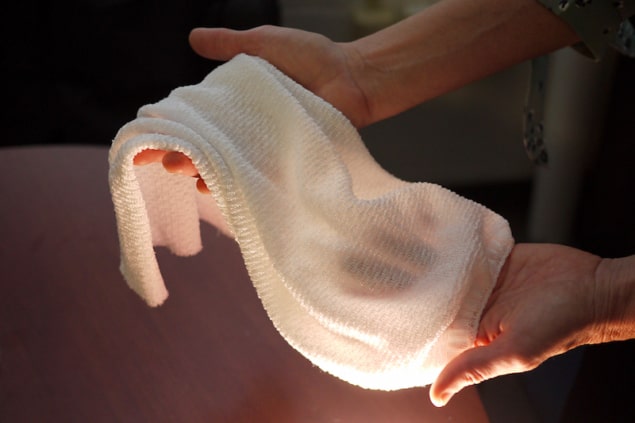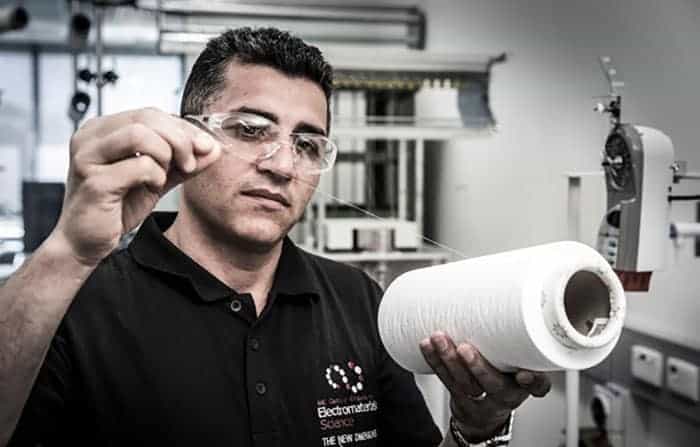
A new textile made from infrared sensitive yarn coated with a thin layer of carbon nanotubes self-regulates its thermal properties depending on how hot or cold the wearer is. While the design and performance of the technology still needs to be optimized, the materials making up the fabric are readily available and the nanotubes can easily be added to the yarn during standard dyeing processes at little additional cost.
Many animals have evolved to efficiently manipulate infrared radiation for heating up and cooling down. Saharan silver ants, for example, dissipate excess heat thanks to triangular shaped hairs that can reflect near-IR rays depending on the position of the Sun. Things are different for humans – our bodies absorb and lose heat mainly through IR radiation with a wavelength of 10 microns. Unfortunately, neither our skin or even the most sophisticated of textiles made so far can control this wavelength channel in real time to regulate heating and cooling.
Fluffy textile
A team of researchers led by Min Ouyang and YuHuang Wang of the University of Maryland in the US has now designed a new IR-adaptive textile made from triacetate and cellulose bimorph fibres coated with a thin layer of conducting few-walled carbon nanotubes (CNTs) that can do just this. The yarn making up the textile is fluffy with large distances between the fibres.
The two fibres in the textile both repel and attract water, so they warp and collapse into a tight bundle when placed in a hot and humid environment (such as that around a person sweating), explains Ouyang. This distortion, or actuation, brings the strands of the fibre yarns closer together, which induces resonant electromagnetic coupling between the CNTs in the fibre coating. This coupling shifts the textile’s effectiveness in emitting energy as thermal radiation (its emissivity) so that it spectrally overlaps with that of skin. This effectively enhances heat exchange with the human body to dissipate heat.

In contrast, when the textile is cold or dry, the reverse effect occurs: the fibres expand and reduce heat dissipation, keeping the wearer warm.
Almost instant reaction
The fabric either blocks IR radiation or allows it to pass through depending on how the electromagnetic interactions are tuned, or gated. “The reaction is almost instant, so before the wearer realizes they’re getting hot the garment could already be cooling them down. Conversely, as the body cools down, the dynamic works in reverse to trap in heat.

Knitted nanotubes spin an electromechanical yarn
“Until now, the only way to regulate the heat radiator that is the human body was to put on or take clothes off,” he adds. “Our work is the first to incorporate fundamental physics into textile technology to make a fabric that is a truly bidirectional regulator of thermal radiation.”
The research, which is detailed in Science 10.1126/science.aau1217, could help the textile industry change the way it thinks when looking to improve the functionality of fabric and clothing, he tells Physics World. “While we would still like to optimize the design and performance of our technology, the materials we employed in our yarn are readily available already.”



